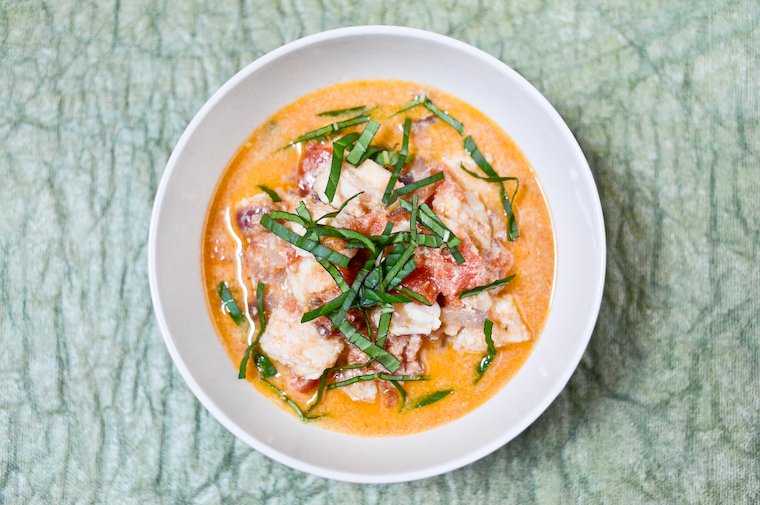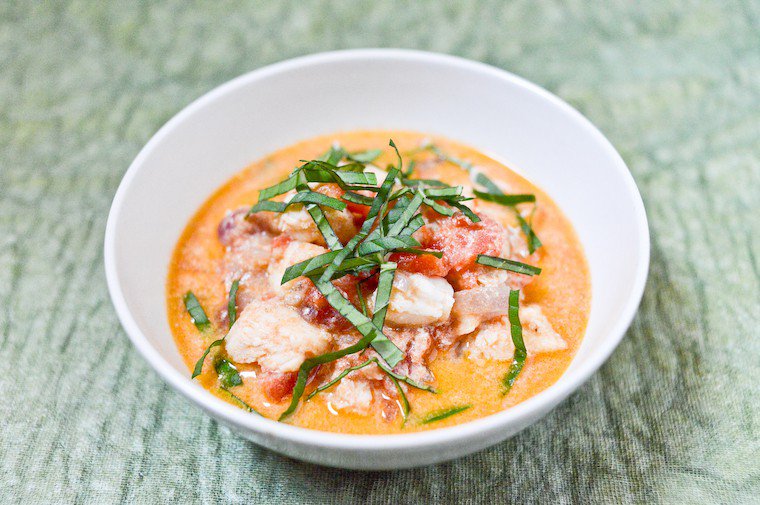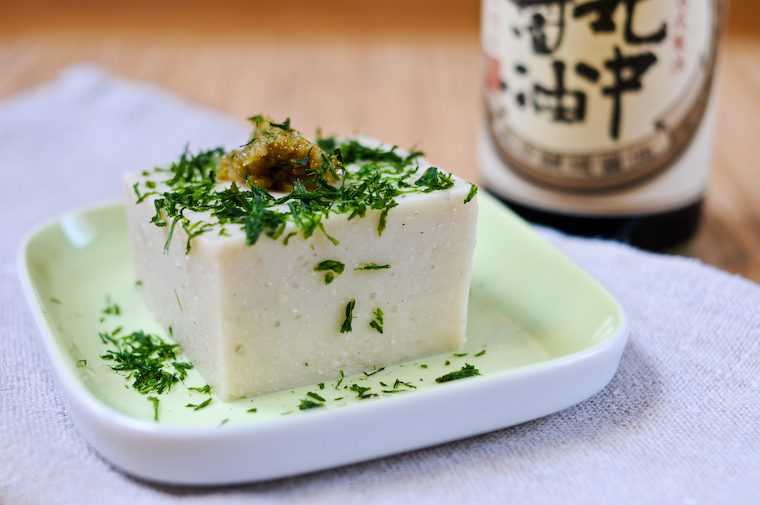This is one of those recipes I’m super excited to have added to my repertoire: it’s very (very) easy, it can be whipped up from 100% pantry ingredients, and once it’s on the table it tastes and feels like a much more sophisticated dish, the kind that makes you sigh with pride and content and say, “We eat pretty well around here, don’t we?”
It started out as the 20-minute fish curry in Meera Sodha’s excellent book, Made in India, Cooked in Britain, which I own in its British edition and have used multiple times with great success. Her original recipe is for an Indian-style curry without the coconut milk, but after several iterations in my kitchen it has taken on Southeast Asian flavors (lemongrass, basil or cilantro, lime juice) that make it a little bit Thai as well.
An amazingly easy fish curry
I apologize to purists of either cuisine in advance, but the result is a fine curry, richly favorful and clean-tasting, that does really well on its own or served over rice. My current preference goes to this sticky rice, which I throw into the rice cooker Maxence talked me into buying despite my reluctance (rice cooks just fine in a regular pan on the stove! we don’t need a specialized appliance!), and I now love and cherish (perfect rice! every time! no need to watch or time or anything!).
Since settling on this wonderful fish curry formula, I now make sure I keep on hand a can of coconut milk, a jar of whole peeled tomatoes, and fish fillets in the freezer at all times (the spices, onions, and fresh ginger I always have around), and I throw the curry together almost on a weekly basis. Although I’ve only made it for our family meals so far, it is without a doubt a company-worthy dish, one you could even pull off for a weeknight dinner party, possibly followed by this vanilla-roasted pineapple.
Join the conversation!
What’s the most recent addition to your roster of easy, weeknight-friendly recipes? We all need more of those so please share!






